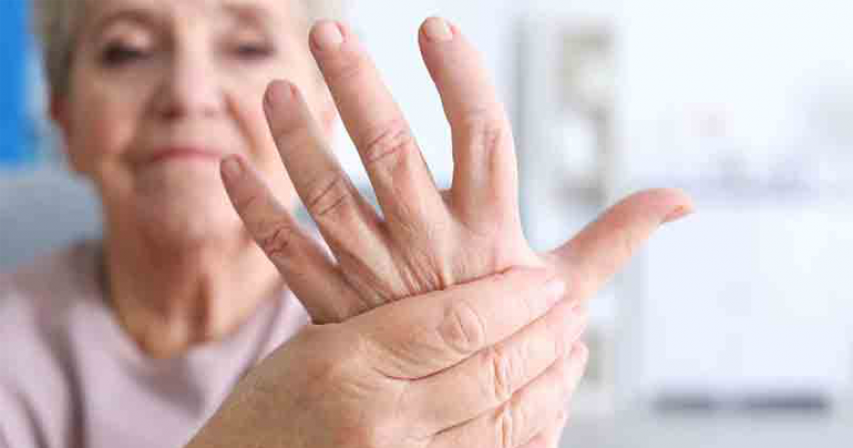A Comprehensive Guide To Dealing With Arthritis Pain
- 4 years ago

With over 100 different forms of inflammatory conditions, arthritis is one of the most debilitating diseases that affect millions of people around the world. Arthritis starts reducing a person's ability to carry out physical activities slowly and gradually, which makes it hard for them to live a normal life.
It not only causes physical pain but also affects the mental wellbeing of a person when they find it difficult to live an independent and dignified life.
It's hard for patients to identify arthritis pain in the beginning because its severity varies from person to person.
Since everyone's body reacts differently to joint disease, you shouldn't make the mistake of assuming the primary source of your pain by comparing it with someone else's symptoms. What you should do when you experience pain in your joints is to see a doctor or a physical therapist immediately. If you consult a physical therapist in the initial stage itself, they will prevent your symptoms from worsening.
Since there is no cure for arthritis, the treatment that you will receive will only focus on addressing the signs and symptoms of your joint disease.Using CBD products is a great way to help you feel better and less painful. Learn more about recommended CBD products by experts here https://www.healthcanal.com/best-cbd-oil
Osteoarthritis, rheumatoid arthritis, psoriatic arthritis, gout, and fibromyalgia are the most common inflammatory conditions that affect joints. The signs and symptoms of each of these problems differ slightly, so you have to take the treatment based on the root cause of your joint pain.
For example, if you are struggling with osteoarthritis, then you will experience the following symptoms.
Pain and stiffness in the knees, hips, neck, and lower back
Pain that worsens with physical activity
Difficulty walking and performing tasks that put pressure on weight-bearing joints
Reduced range of motion and loss of flexibility
According to Arthritis Foundation, osteoarthritis is an inflammatory condition in which the cartilage found in the joint breaks down. It causes pain in the affected joint during the movement because when the cartilage starts declining the bones end up rubbing against one another.
On the other hand, if the root cause of your joint pain is rheumatoid arthritis, then you will experience symptoms such as fatigue, frequent headaches, redness in joints, joint swelling, and reduced joint range of motion.
If you talk about psoriatic arthritis, its signs and symptoms include red patches of skin, foot pain, severe to mild pain in lower back, and swollen fingers, etc.
Whereas if you talk about people struggling with fibromyalgia, they observe symptoms such as restless legs syndrome, memory problems, morning stiffness, severe to mild pain during mensuration, headaches, and difficulty sleeping, which affect their lives in a big way.
Tips For Managing Arthritis Pain
See a Physical Therapist
It is crucial to seek quality treatment like physical therapy to relieve the pain and address other signs and symptoms of arthritis.
It helps in restoring the range of motion and strengthens the joints. Physical therapy also boosts the muscles around the affected joints.
According to Bridle Trails Physical Therapy, "Physical therapy is one of the most important treatments for arthritis and makes a significant impact in your joint health."
When you see a physical therapist, they focus on analyzing your range of motion, the severity of your pain, and your flexibility level. It helps them identify the actual cause of your pain, which makes it easier for them to create an effective care plan. Based on how severe is your pain, they will incorporate therapeutic exercise in your care plan to relieve it and to strengthen your joints.
They will mostly include stretching and strength building moves in your care plan to manage your signs and symptoms. Apart from that, your therapist may also use techniques like manual therapy and Kinesio Taping to address them.
Your therapist will also educate you on how to protect your joints and prevent the pain in the future.
Keep Your Joints Active
Apart from seeking physical therapy, you should also perform light exercises at home to keep your joints active. Runner's stretch, the forward hang, the seated back twist are some of the stretching exercises that you can perform at home to improve your flexibility and to keep your joints active.
Inactivity damages the cartilage further by shrinking it and making it stiff; therefore, you should keep on performing light joint-specific exercises at home.
Lose Your Weight
If you are a bit fat, you should take the right steps toward being fit. Excessive weight puts stress on your spine, knees, hips, and ankles. Overweight people with arthritis experience more pain in their joints while carrying out physical activities when compared to those with a healthy weight.
It means, even if you are struggling with arthritis if you become successful in shedding those extra pounds, you will feel way to less pain in your joints when compared to earlier when you were overweight.
Apart from that, you should eat anti-inflammatory foods such as spinach, collards, tomatoes, almonds, walnuts, and fruits like strawberries and blueberries to fight joint inflammation and reduce pain.
Comments